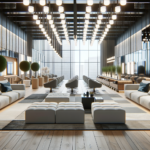Jeep Color Options: A Spectrum of Adventure
When it comes to choosing a vehicle, color is often the first aspect that catches the eye. Jeep, known for its rugged and adventurous spirit, offers a diverse palette of colors that reflect its bold identity. From earthy tones that blend seamlessly with nature to vibrant hues that demand attention, Jeep’s color options cater to a wide range of tastes and personalities.
Jeep’s color offerings include classic shades like granite crystal and bright white, which exude a timeless appeal. For those seeking a more adventurous vibe, colors such as firecracker red and hydro blue provide a vibrant contrast against natural landscapes. Additionally, Jeep’s limited-edition colors, such as snazzberry and gecko, add a unique touch that appeals to collectors and enthusiasts alike.
The choice of color can also reflect the intended use of the vehicle. Earthy tones like sting-gray and billet silver are popular among off-road enthusiasts who appreciate a more understated look that doesn’t show dirt as easily. In contrast, urban drivers might opt for the sleekness of black or the modern appeal of slate blue.
Ultimately, Jeep’s color options allow drivers to make a statement about their lifestyle and preferences, whether they’re navigating city streets or exploring remote trails. The brand’s commitment to offering a wide range of color choices ensures that each Jeep can be as unique as the person driving it.
Automotive Color Trends: Reflecting Personality and Innovation
The automotive industry has seen a significant evolution in color trends over the years, influenced by technological advancements, cultural shifts, and consumer preferences. While traditional colors like black, white, and silver remain popular due to their versatility and resale value, there is a growing trend towards more expressive and bold color choices.
Recent trends indicate a rise in the popularity of matte finishes and metallic hues, which offer a sophisticated and modern look. These finishes not only enhance the aesthetic appeal of vehicles but also provide a tactile experience that adds to the overall driving pleasure. Additionally, two-tone color schemes are gaining traction, allowing for greater customization and personalization.
Environmental consciousness is also playing a role in color trends. Eco-friendly shades, such as various greens and blues, are becoming more prevalent as they symbolize sustainability and a connection to nature. These colors resonate with consumers who prioritize environmental responsibility in their purchasing decisions.
The influence of technology cannot be overlooked, as advancements in paint technology have made it possible to create colors that change with light or temperature, offering a dynamic and interactive experience. This innovation reflects a broader trend towards personalization and self-expression in the automotive industry.
As color trends continue to evolve, they offer drivers the opportunity to express their individuality and align their vehicle choice with their personal values and lifestyle. Whether opting for a classic hue or a cutting-edge finish, the color of a vehicle is an integral part of its identity.
Vehicle Customization for Self-Expression: Making Your Mark
In an era where individuality is celebrated, vehicle customization has become a popular way for drivers to express their unique personalities and preferences. From custom paint jobs to personalized interiors, the options for making a vehicle truly one’s own are virtually limitless.
One of the most accessible forms of customization is through color. Custom paint jobs allow drivers to choose from an endless spectrum of colors and finishes, creating a look that is entirely unique. Whether it’s a bold, eye-catching shade or a subtle, sophisticated tone, the right color can transform a vehicle into a personal statement.
Beyond paint, customization options extend to various aspects of the vehicle’s design and functionality. Interior modifications, such as custom upholstery and dashboard designs, provide additional opportunities for personalization. Drivers can also enhance their vehicle’s performance with aftermarket parts, such as upgraded exhaust systems or suspension kits, tailoring the driving experience to their preferences.
For those who enjoy a more hands-on approach, DIY customization projects offer a creative outlet. From installing custom lighting to adding unique decals or wraps, these projects allow for a high degree of personalization and can often be completed with minimal tools and expertise.
Ultimately, vehicle customization is about more than just aesthetics; it’s about creating a connection between the driver and their vehicle. By tailoring a vehicle to reflect personal tastes and values, drivers can enhance their sense of pride and satisfaction, making every journey a reflection of who they are.
The Psychology of Color in Automotive Choices
Color psychology plays a significant role in automotive choices, influencing not only the perception of the vehicle but also the emotions and behaviors of those who drive and encounter it. Understanding the psychological impact of color can help drivers make informed decisions that align with their personal and lifestyle needs.
Colors like red and orange are often associated with energy, excitement, and confidence, making them popular choices for sports cars and vehicles intended to make a bold statement. These colors can evoke a sense of urgency and adventure, appealing to drivers who enjoy standing out from the crowd.
In contrast, blue and green are calming colors that convey a sense of tranquility and reliability. These shades are often chosen by drivers who value stability and comfort, as they create a soothing environment that enhances the driving experience.
Neutral colors such as black, white, and gray are associated with sophistication and timelessness. They appeal to a wide audience due to their versatility and ability to complement any style or setting. These colors are often seen as safe choices that maintain their appeal over time.
The choice of color can also be influenced by cultural and regional factors. For example, bright and vibrant colors may be more popular in regions with sunny climates, where they can reflect light and stay cooler. Conversely, darker colors may be favored in cooler climates where warmth is a priority.
Ultimately, the psychology of color in automotive choices highlights the importance of selecting a color that resonates with the driver’s personality and lifestyle. By understanding the emotional and psychological impact of color, drivers can choose a vehicle that not only meets their functional needs but also enhances their overall driving experience.
Choosing the Right Color: Practical Considerations and Tips
Selecting the right color for a vehicle involves more than just personal preference; practical considerations also play a crucial role. Factors such as maintenance, climate, and resale value should be taken into account to ensure that the chosen color meets both immediate and long-term needs.
Maintenance is a key consideration, as some colors are more forgiving when it comes to showing dirt and scratches. Lighter shades, such as silver and white, tend to hide imperfections better than darker colors, making them a practical choice for those who prioritize ease of maintenance.
Climate can also influence color choice. In warmer regions, lighter colors are often preferred as they reflect sunlight and help keep the vehicle cooler. Conversely, darker colors may be more suitable for cooler climates where heat retention is beneficial.
Resale value is another important factor to consider. While unique and bold colors can be appealing, they may not have the same broad market appeal as more traditional colors. Neutral shades like black, white, and gray often have higher resale values due to their timeless appeal and widespread popularity.
When choosing a color, it’s also worth considering how it aligns with the vehicle’s intended use. For off-road vehicles, earthy tones may be more practical, while urban drivers might opt for sleek, modern shades that complement cityscapes.
By taking these practical considerations into account, drivers can select a vehicle color that not only reflects their personal style but also meets their practical needs, ensuring satisfaction and enjoyment for years to come.







